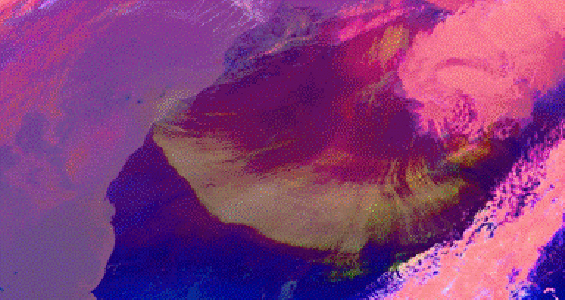Highlights from 2013: A Year of Research, Outreach, and Education
Twelve months. Twelve representative stories of the important science and education news highlights of 2013 from the Space Science and Engineering Center (SSEC) and the Cooperative Institute for Meteorological Satellite Studies (CIMSS). Each story reflects our commitment to the advancement of science through collaborative research, education, and public engagement.
Happy New Year!
| 1 |  |
ATS-I Anniversary: SSEC Continues to Advance Technology
December 6, 1961, marks the launch anniversary of NASA’s Applications Technology Satellite-I (ATS-I). On board was the ground-breaking Spin-Scan Cloud Camera (SSCC) invented by Professors Robert Parent and Verner Suomi, founders of the Space Science and Engineering Center (SSEC) at the University of Wisconsin-Madison. |
| 2 |  |
Science Mentors Who Make A Difference
Science mentors matter. Combine a science mentor with a group of kids brainstorming to solve a scientific problem and you’ve got a recipe for unbridled excitement, education, and possibly, future scientists in the making. In fact, the positive influence of a passionate science mentor is well-researched. |
| 3 |  |
Grad Student Works to Improve Storm Prediction
UW-Madison graduate student Bill Line has scored the perfect job. Soon after receiving his Master’s Degree from the Department of Atmospheric and Oceanic Sciences in May, he will be heading to Norman, Oklahoma, where he will be the new Cooperative Institute for Mesoscale Meteorological Studies (CIMMS) Satellite Liaison at the NOAA/National Weather Service Storm Prediction Center (SPC). |
| 4 |  |
Using Satellite Observations of Clouds to Improve Weather Forecasts
Clouds play a crucial role in regulating the earth’s weather and climate. They adjust the amount of solar radiation that reaches the earth’s surface and affect the surface temperature and moisture. The processes involved in cloud formation also influence large-scale atmospheric circulation and can lead to rapid storm intensification. |
| 5 |  |
Tales of People, Culture, and a Love of Weather Satellites: SSEC Executive Director Tom Achtor Retires
The path to a career isn’t always straight, but often there’s an underlying theme that brings people to the place where they are supposed to be, a place where they thrive. In the case of Tom Achtor, outgoing Executive Director of Science at the Space Science and Engineering Center (SSEC), it was a love of and interest in the environment and the earth sciences that eventually guided him to UW-Madison and SSEC. |
| 6 |  |
Super Rapid Scan Imaging: Tracking Severe Weather Minute-by-Minute
As severe weather develops, it can change rapidly, necessitating equally rapid updates to watches and warnings issued by forecasters. But imagers on current geostationary weather satellites in the United States routinely generate imagery only every 15 to 30 minutes, not frequent enough when severe storms are developing and changing quickly. |
| 7 |  |
Quantitatively Monitoring Dust Events: Better Weather Prediction Ahead
Dust storms occur more frequently now due to climatic variability and land-use change. During an outbreak, dust storms wreak havoc in cities and along major transportation routes. Dust pollution also threatens human health, raising the risk of heart, lung and other chronic diseases. In recent years, scientists have found that dust storms can also affect the formation of hurricanes and changes in climate. To better protect people from dust storms and understand dust’s impact on climate, atmospheric scientists are using satellite observations to detect and predict dust events. |
| 8 |  |
Satellite Imagery on Your Smart Phone – SSEC Has An App For That
In April of 2013, SSEC released its first smart-phone App designed specifically to display and animate full-resolution, real-time weather satellite data. The free App, called “WxSat” (short for Weather Satellite), delivers imagery from the SSEC Web Mapping Server (WMS) to iOS devices such as the iPad, iPhone, and iPod-Touch. |
| 9 |  |
Majoring in Meteorology at Grandparents University
The University of Wisconsin-Madison offers a unique opportunity for grandparents and their grandkids to spend time together during the summer and have fun learning on campus. It’s all part of Grandparents University (GPU), a series of two-day programs in which grandparents and their grandkids participate in hands-on activities in their “major.” |
| 10 |  |
Hurricane Monitoring in 2013: Improving the Tools and Our Understanding
As the U.S. braces for this year’s hurricane season (officially June 1 – November 30), CIMSS scientists are gearing up with a number of research projects designed to provide more insight into tropical cyclones and how they are formed. Additionally, they are working to demonstrate and improve satellite-derived products used both experimentally and operationally at the National Hurricane Center, as well as provide the tools necessary to investigate possible climate trends in hurricanes. |
| 11 |  |
Ackerman Elected 2014 AMS Fellow
Steve Ackerman, professor of atmospheric and oceanic sciences and director of the Cooperative Institute for Meteorological Satellite Studies (CIMSS) at the University of Wisconsin-Madison has been elected a Fellow of the American Meteorological Society (AMS). |
| 12 |  |
Thirty Years of Cloud Studies Paying Off
An article published in the Bulletin of the American Meteorological Society compares and evaluates current long-term cloud data products from a variety of sensors and research teams. Of the many cloud datasets measured by the GEWEX study, four originated at the UW-Madison Space Science and Engineering Center (SSEC) and the Cooperative Institute for Meteorological Satellite Studies (CIMSS). |

